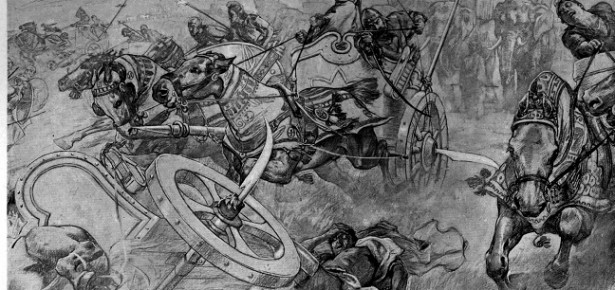
In 540 AD, the army of Chosroes, the Persian king of kings, appeared before Antioch, the jewel of the Byzantine Levant. By the time the troops left, taking with them into captivity everyone they hadn’t killed, there was no more Antioch. It was a calculated blow to the prestige of the Byzantine empire, a demonstration that emperor Justinian, far away in Constantinople, was powerless to protect the greatest cities of his dominions and their inhabitants from the might of Chosroes. It was a challenge that required an immediate response, so Justinian dispatched an army – of workers and builders. They leveled the rubble, spreading two it meters and more deep, and began the new Antioch on top. The first things built, alongside the new city wall, were two majestic avenues that met at right angles in the center of town and connected to the four main gates in the wall, lined on both sides by continuous, colonnaded porticoes. Several thousand new marble columns were required. Aqueducts and public amenities such as baths followed, as well as a cathedral and palaces for the bishop and provincial governor, built in close proximity to the colonnaded avenues. Behind the majestic facade, invisible from these streets, the fields of rubble remained.
Like anyone who has watched a rat in a maze, late-Roman and Byzantine emperors sensed that the contours of built space define the horizons of the possible, often in ways only partially or subliminally apparent to those moving through it. They strove to make cities into places that would be – could only be – encountered on their own terms, largely by turning the busiest streets into monumental parade-routes: wide avenues flanked by covered, colonnaded walkways and filled with triumphal arches, inscriptions proclaiming imperial might and benevolence, and statues of themselves and their favorites, watching unblinkingly over all passersby. Behind the colonnades, the urban masses might live among the dilapidated relics of the past, or the shoddy dross of an impoverished present. But from Milan to Constantinople, the view from one of the grand avenues, its porticoes thronged with spectators craning to behold an emperor, governor or bishop on parade, suggested that things had never been better; that the cosmic order guaranteed and embodied by the state and its leaders was as magnificent and eternal as ever.
What I was not able to discuss in The Afterlife of the Roman City is the extent to which similar parade-routes characterize the capitals of modern totalitarian regimes. During the 1950s, while most of East Berlin lay in ruins, the East German government built a road a football field in width and over a mile long, lined by the grandiose, classicizing façades of eight-story buildings. The Stalinallee (later the Karl-Marx-Allee) hosted the best shops, restaurants and apartments in the city; it also hosted every government-sponsored parade worth photographing, notably the May-Day parade, the annual apotheosis of the body-politic of the socialist state. If you have seen communist-era press-photos of a boulevard in East Berlin packed with endless phalanxes of troops and tanks, you have seen the Stalinallee. Or take Pyongyang, where official photos of massive military parades cum demonstrations of might and universal solidarity with the figure of the “Dear Leader” overwhelmingly feature one area of the city: the Brobdingnagian esplanade, fronted by classicizing colonnaded facades, called Kim Jong-Il Square. And with good reason. Were one to take the camera off-set, among the crumbling hulks where most people live, the meticulously framed image of the Dear Leader and the state he embodies would crumble too.
These and other modern examples point toward broader questions I hope to think about more. How and why have autocratic regimes operating across abysses of time and space arrived at such (at least superficially) similar solutions to the configuration and use of urban space? Is there an architecture of totalitarianism, a formal extension of preening autocrats’ quest to permeate their subjects’ lives and haunt their dreams, the better to subordinate minds and bodies to the overwhelming imperatives of the state? Can sixth-century Antioch, in short, teach us about 20-teens Pyongyang?
Latest Comments
Have your say!